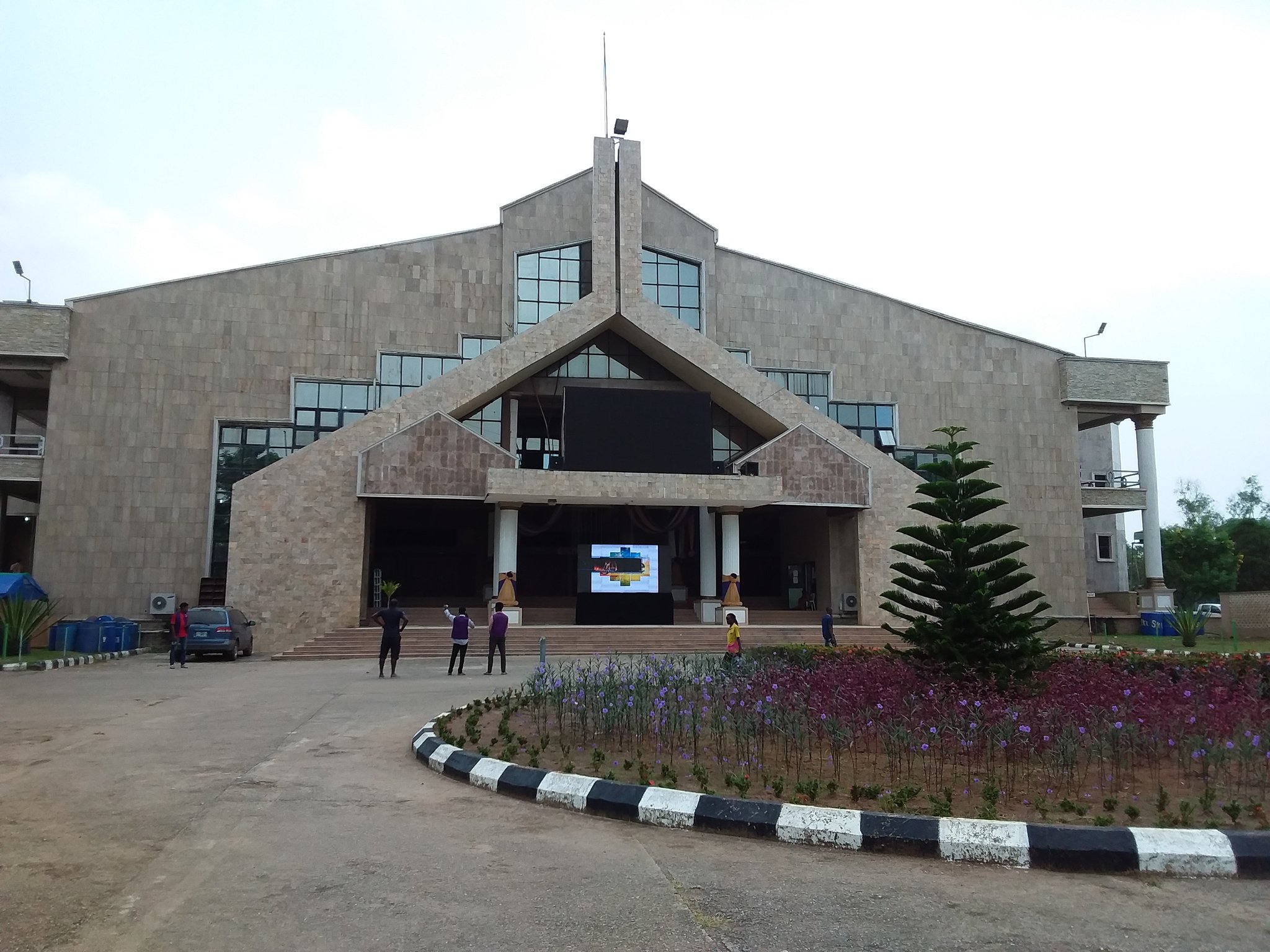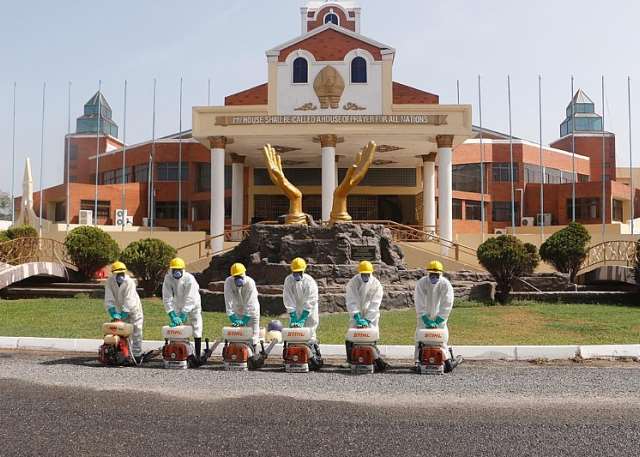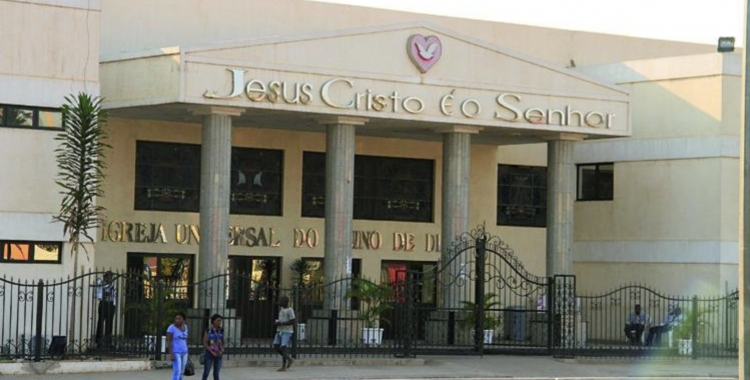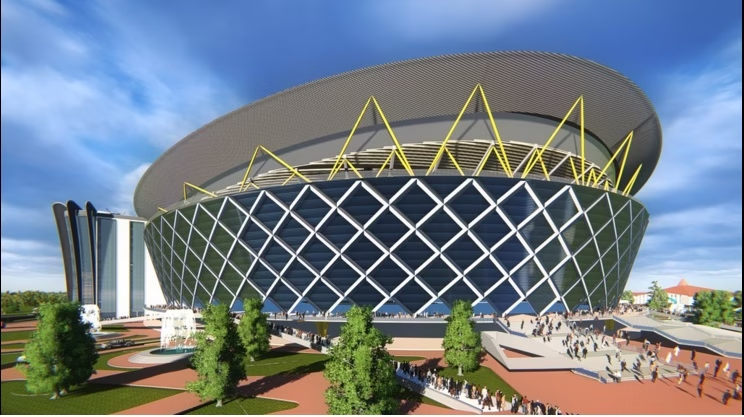Africa’s 10 Most Magnificent Church Auditoriums: Architectural Marvels of Faith
Across the African continent, a remarkable phenomenon has emerged over the past few decades: the construction of massive church auditoriums that rival and often surpass the scale of major secular venues. These architectural marvels represent more than just impressive buildings—they embody the explosive growth of Christianity in Africa, particularly within Pentecostal and Charismatic denominations.
These mega-churches serve as powerful symbols of faith communities’ aspirations, combining spiritual purpose with innovative design. From Nigeria to South Africa, these structures have transformed the religious landscape while becoming significant landmarks that attract both worshippers and architectural enthusiasts.
This article explores the ten largest and most impressive church auditoriums across Africa, examining their capacity, architectural features, historical significance, and the vibrant communities they serve.
Church Auditoriums || The Rise of Mega-Churches in Africa
Historical Context and Growth Trends
The proliferation of massive church auditoriums across Africa correlates with the remarkable growth of Christianity on the continent. According to the Center for the Study of Global Christianity, Africa has experienced the largest growth in Christian population worldwide, with numbers expected to reach 700 million by 2025.
This growth has been particularly pronounced in Pentecostal and Charismatic movements, which emphasize experiential worship, contemporary music, and dynamic preaching—all elements that benefit from larger gathering spaces. The Pew Research Center notes that these denominations account for more than a quarter of the world’s 2 billion Christians, with their strongest presence in Africa.
Architectural and Cultural Significance
These mega-auditoriums represent more than just functional spaces for worship. They serve as:
- Visible symbols of spiritual identity and community pride
- Economic engines generating employment and tourism
- Cultural centers hosting concerts, conferences, and events
- Technological showcases featuring advanced audio-visual systems
- Community service hubs providing education and social support
Professor J. Kwabena Asamoah-Gyadu of Trinity Theological Seminary in Ghana has observed that these structures “represent the coming of age of African Christianity,” demonstrating both spiritual vitality and organizational capability.
Nigeria’s Dominant Presence
The Faith Tabernacle: Winner’s Chapel International
Standing as Africa’s largest church auditorium, the Faith Tabernacle in Ota, Nigeria, is a monumental structure that belongs to Bishop David Oyedepo’s Living Faith Church Worldwide (also known as Winner’s Chapel International).

Key Statistics:
- Seating capacity: 50,000
- Completed: 1999
- Construction time: 12 months
- Built without a single beam support
- Recognized by Guinness World Records at the time of completion
The auditorium’s construction represents an impressive engineering feat—completed in just one year using mostly local contractors and materials. Its massive roof spans 560 meters without central supporting pillars, creating an unobstructed view of the altar from every seat.
The Winner’s Chapel International complex extends beyond the main auditorium to include a 15,000-vehicle parking lot, housing for church officials, and extensive administrative facilities. The church has since expanded to branches in 147 countries worldwide.
Dunamis Glory Dome: Abuja
The Glory Dome, belonging to Dunamis International Gospel Centre led by Pastor Paul Enenche, claimed the title of the largest church auditorium in the world when it opened in 2018.

Key Statistics:
- Seating capacity: 100,000
- Completed: 2018
- Located in Abuja, Nigeria’s capital
- Features an innovative roof structure
- Built on church-owned “City of Glory” land spanning 500+ acres
The Glory Dome features modern architectural elements while emphasizing functionality. Its massive circular design allows for efficient crowd movement, and advanced acoustics enable clear sound throughout the space despite its enormous size. The church complex includes a children’s church, pastoral quarters, and administrative buildings.
Salvation Ministries: Port Harcourt
Founded by Pastor David Ibiyeomie, Salvation Ministries’ headquarters in Port Harcourt features a remarkable 120,000-seating capacity facility.
Key Statistics:
- Seating capacity: 120,000
- Located in Port Harcourt, Nigeria
- Founded by Pastor David Ibiyeomie
- Features multiple satellite buildings and facilities
- Hosts international conferences and events
This expansive complex represents the growing influence of Nigeria’s Rivers State in the religious landscape. Salvation Ministries has expanded to numerous countries, with the Port Harcourt headquarters serving as the center of its global operations.
South Africa’s Architectural Innovations
Grace Bible Church: Soweto
Grace Bible Church represents South Africa’s contribution to innovative church design, with its main auditorium in Soweto standing as one of the most technologically advanced worship spaces on the continent.

Key Statistics:
- Seating capacity: 20,000
- Founded by Bishop Mosa Sono
- Located in the historic Soweto township
- Features award-winning acoustic design
- Incorporates cultural elements in its architecture
The Grace Bible Church auditorium blends contemporary design with elements of traditional African architecture. Its construction employed local materials and labor, creating economic opportunities within the community. The building’s design allows for natural light while maintaining energy efficiency.
Rhema Bible Church: Randburg
Founded by Pastor Ray McCauley, Rhema Bible Church’s auditorium stands as one of South Africa’s largest worship spaces.
Key Statistics:
- Seating capacity: 7,500
- Located in Randburg, Johannesburg
- Founded in 1979
- Features a distinctive curved roof design
- Houses a Bible college and media center
Rhema Bible Church has played a significant role in South Africa’s religious and social landscape, particularly during the country’s transition from apartheid. Its auditorium design emphasizes visibility and acoustics, creating an intimate atmosphere despite its size.
East Africa’s Growing Presence
Nairobi Chapel: Kenya
While not as large as some West African counterparts, Nairobi Chapel’s auditorium represents East Africa’s growing influence in contemporary church architecture.
Key Statistics:
- Seating capacity: 15,000
- Located in Nairobi, Kenya
- Founded by Oscar Muriu
- Features sustainable design elements
- Incorporates local materials and craftsmanship
Nairobi Chapel has emerged as a trendsetter in church planting across East Africa. Its auditorium reflects a commitment to both functionality and aesthetic beauty, with design elements that reference Kenyan cultural traditions while embracing modern architectural principles.
House of Prayer Ministries: Uganda
Located in Kampala, Pastor Aloysius Bugingo’s House of Prayer Ministries features one of East Africa’s largest worship spaces.

Key Statistics:
- Seating capacity: 30,000
- Located in Kampala, Uganda
- Expanded rapidly since 2010
- Features multiple overflow areas
- Hosts major conferences for the region
The auditorium’s practical design emphasizes functionality over elaborate aesthetics, reflecting the ministry’s focus on accessibility and growth. Its construction has had significant economic impact in Kampala’s Makerere area.
Ghana’s Historic Contributions
Action Chapel International: Accra
Founded by Archbishop Nicholas Duncan-Williams, Action Chapel International’s cathedral in Accra represents one of West Africa’s most architecturally significant church buildings.

Key Statistics:
- Seating capacity: 14,000
- Located in Accra, Ghana
- Founded in 1979
- Features distinctive spires and glasswork
- Houses the Prayer Cathedral and multiple ministry facilities
Action Chapel International holds historical significance as one of Ghana’s pioneering charismatic churches. Its auditorium combines elements of traditional cathedral design with modern functionality, creating a space that honors both heritage and contemporary worship needs.
Perez Chapel International: Accra
Led by Bishop Charles Agyin-Asare, Perez Chapel’s Perez Dome stands as one of Ghana’s largest enclosed spaces.

Key Statistics:
- Seating capacity: 14,000
- Located in Dzorwulu, Accra
- Completed in 2011
- Features a distinctive domed roof
- Hosts major international conferences
The Perez Dome represents Ghana’s growing influence in the Charismatic movement. Its design emphasizes both functionality and symbolic meaning, with architectural elements that reference biblical concepts while providing practical solutions for large gatherings.
Angola’s Emerging Architectural Statement
Universal Church of the Kingdom of God: Luanda
The Cathedral of Faith in Luanda represents Angola’s largest church auditorium and a significant architectural statement in a post-conflict context.

Key Statistics:
- Seating capacity: 16,000
- Located in Luanda, Angola
- Completed in 2013
- Features a modern design with a distinctive roofline
- Includes multiple ministry and administrative buildings
This massive structure represents both religious growth and national reconstruction following Angola’s civil war. Its construction employed thousands of local workers and used materials sourced within Africa wherever possible.
Architectural Innovation and Technology
Design Challenges and Solutions
Building auditoriums of this scale presents unique architectural and engineering challenges:
- Creating clear sightlines for thousands of worshippers
- Designing effective acoustic environments without echo
- Ensuring efficient entry/exit for massive crowds
- Providing adequate ventilation and temperature control
- Creating supporting infrastructure for transportation and parking
Architects addressing these challenges have developed innovative solutions including:
- Cantilevered roofs that eliminate the need for supporting columns
- Advanced sound-absorbing materials and strategic speaker placement
- Multiple entry points with computer-modeled crowd flow
- Hybrid cooling systems that combine natural and mechanical ventilation
- Satellite parking with shuttle systems for major events
Technology Integration
These modern auditoriums integrate sophisticated technology systems:
- High-definition LED screens visible from every seat
- Advanced sound systems with digital mixing consoles
- Broadcast-quality lighting for television production
- Simultaneous translation systems for international audiences
- Live streaming capabilities reaching global audiences
According to architectural researcher Dr. Ola Uduku at the University of Edinburgh, these technological elements represent “a distinctive African modernism that embraces global technology while responding to local needs and cultural contexts.”
Social and Economic Impact of Church Auditoriums
Community Development Initiatives
Beyond their religious functions, these mega-auditoriums frequently serve as centers for community development:
- Educational programs ranging from basic literacy to university-level courses
- Healthcare initiatives including clinics and medical outreaches
- Vocational training and entrepreneurship programs
- Food distribution and poverty alleviation efforts
- Youth development through sports and arts programs
The World Bank has recognized faith-based organizations as significant contributors to development across Africa, with these large facilities often serving as operational hubs for humanitarian work.
Tourism and Economic Contributions
These impressive structures have become unexpected contributors to tourism and economic development:
- Religious tourists travel specifically to visit famous churches
- Construction and maintenance create thousands of jobs
- Conferences and events generate hospitality revenue
- Technical training for audio-visual and production creates skilled workers
- Adjacent businesses benefit from regular large gatherings
A study by the University of Cape Town’s urban development program found that areas surrounding major religious centers often experience significant economic growth and property value increases.
Conclusion
Africa’s largest church auditoriums represent a fascinating intersection of faith, architecture, technology, and community development. These structures stand as powerful testimonies to the continent’s religious vitality while showcasing African innovation and organizational capability.
As Christianity continues to grow across Africa, these impressive spaces will likely continue to evolve, incorporating new designs, technologies, and functions. Beyond their religious significance, they represent important cultural landmarks that tell a story of Africa’s changing social landscape in the 21st century.
Whether viewed as spiritual centers, architectural achievements, or community hubs, these magnificent auditoriums deserve recognition as significant contributions to Africa’s built environment and cultural heritage.
Explore Africa’s Religious Architecture the Church Auditoriums
Are you fascinated by the intersection of faith, architecture, and community in Africa? Join our newsletter for monthly updates on new developments in religious buildings across the continent. Share your experiences visiting any of these remarkable structures in the comments below.



